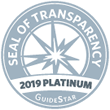or 13.2% of the total were indeterminate. In the group that could utilize GEC, 140 (45.3%) of the 309 eligible indeterminate results were sent for GEC analysis. Of these, 37.1% had GEC-benign results, 55.7% had GEC-suspicious results, and 7.1% had GEC-No result.
Interestingly, there was an increase in indeterminate cytology results after the GEC became available. A total of 197 (41.6%) of the patients with indeterminate biopsies had thyroid surgery and 31.5% were cancerous. Of the patients with indeterminate results who had a repeat biopsy performed, 35.2% returned with non-indeterminate results, so did not require repeat GEC testing. However, the surgery rate for patients with indeterminate results were not different before and after the introduction of the GEC analysis. Further, the cancer rate in indeterminate nodules was not different with GEC availability either.
WHAT ARE THE IMPLICATIONS OF THIS STUDY?
The use of the Afirma GEC previously was shown to decrease the rate of surgery in patients who have GEC-benign results. In contrast, this study did not demonstrate lower surgical rates with the GEC. However it did show that when molecular testing became available, the number of indeterminate biopsy results increased. The rate of cancer and the rate of surgery did not differ with GEC availability in this series. A repeat biopsy led to a more definitive result in 35% of cases, suggesting that this may be an alternative approach to the use of molecular markers in indeterminate nodule cytology.
— Julie Hallanger Johnson, MD

ATA THYROID BROCHURE LINKS
Thyroid Nodules: http://www.thyroid.org/thyroid-nodules/




